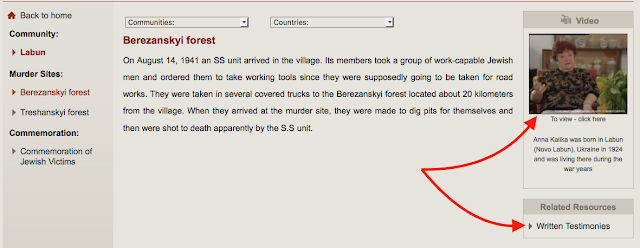The following photo is the last page that I have acquired and shows leadership of the FLPBA during the time of their 40th anniversary. Some of these people have been discussed in previous posts. Some I did not find in other portions of the anniversary publications, and will discuss here. I am still working my way through the burials in the cemetery plots and will, eventually, write more in-depth posts about those I have not yet discussed.
Standing
Nathan Garber (ca. 1884-1963), my great uncle. Nathan, arrived in the USA in 1910. His wife, Yetta and children followed him in 1912. He was in the butter and egg business and is sometimes listed in records as an egg candler. He and Yetta (who died in 1950) are buried in Montefiore Cemetery plot block 89, gate 156N.Sidney Levy (1910/12-2002), glazier. Arrived in the USA with one of his brothers (Paul) and his grandmother, Sarah in 1922. He married Helen (1914-1987). They are both buried in Montefiore Cemetery, block 5, gate 567W.
Harry Myers (1893-1952), my great great uncle (brother of my great grandmother Sarah Myers Morris), a glazier. He married Mollie (ca. 1894-1986). They are not buried in the FLPBA plot, but are interred in Beth David Cemetery, Elmont, NY.
Joe Kraslow (1894-1981), retail merchant, arrived in the USA in 1913. He married Rose (ca. 1896-177). They are buried in Montefiore Cemetery, block 5, gate 567W.
Jack Alperin [aka Jacob Alperin] (ca. 1885-1960), glazier, immigrated in about 1905. He married Dora Waxenberg Myers (ca. 1887-1967). Jacob and Dora are buried in Montefiore Cemtery, block 89, gate 156N, line 6L, graves 4 and 5.
Dave Cohen (ca. 1895-1972). Thus far I have not been successful in locating records for Dave and his wife Rose (ca. 1896-1982). They are in the Beth Moses Cemetery plot. He is likely the son of Israel and Zissel Cohen.
Frank Kraslow (1894-1983), dry goods peddler, arrived in the USA in 1921. He married Goldie (ca. 1895-1978). They are not buried in any of the FLPBA plots.
Seated:
Jack Lerner (1905-1995), glazier, emigrated from Labun about 1921. He married Edna (1909-1997). Jack and Edna are buried in Beth Moses Cemetery.Rose Blumfield (ca. 1877-1956). President of the Ladies Auxiliary, Rose is buried in Montefiore Cemetery, block 89, gate 156N. Her name on the tombstone is Blumenfield.
Abraham Krakowsky (ca. 1888-1985), president of the FLPBA, owned a restaurant. He earlier worked as a presser in the ladies dress industry. He and his wife, Rose (ca. 1888-1960), are buried in the FLPBA Beth Moses Cemetery plot.
Julius Reitman (1900-1994), discussed previously here and here, was a carpenter and glazier. He and his wife Sarah Sherman (ca. 1901-1997) ran a glass shop in Jackson Heights, Queens. They moved to Sharon, Massachusetts and are buried in Agudath Cemetery in West Roxbury.
Benjamin Levy (1908-1994), glazier, was likely called Benson Levy. He was married to Ida Sarah (1910-1972). They are buried at Montefiore Cemetery, block 5, gate 567W, line 1L, graves 7 and 8.
Dave Lerman (1898-1977), glazier, married Esther Lerner (1898-1989). They are buried at Beth Moses Cemetery.









